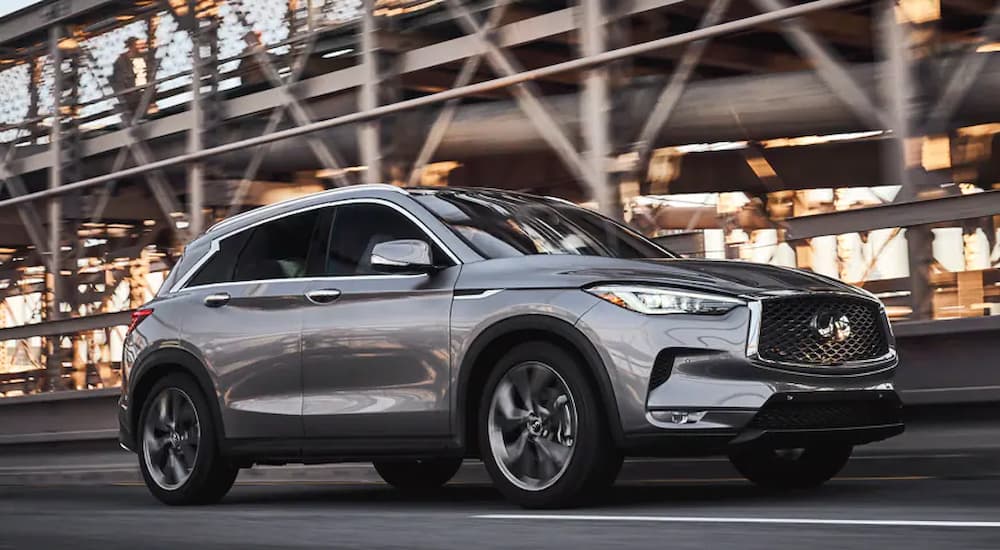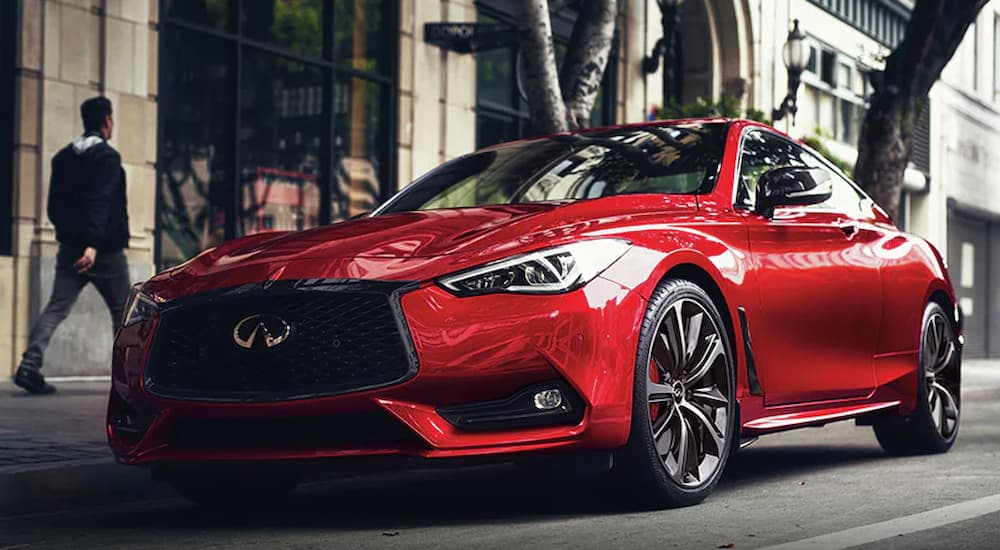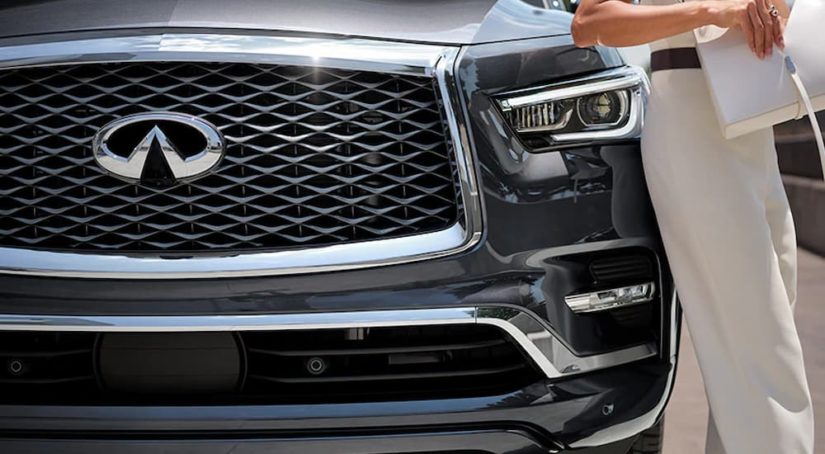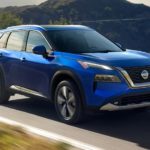The 1980s were a heady time for the Japanese automobile industry. Not content with taking over the American economy car market and building some of the most iconic sports cars in history, the Japanese manufacturers decided to move upmarket and establish luxury branches to compete with prestigious brands like Mercedes and Cadillac. Honda launched Acura in 1986, while 1989 saw Toyota and Nissan join in with Lexus and Infiniti. Fast forward over 30 years, and Lexus is the third most popular luxury brand in America, beating Mercedes by a healthy margin, while Acura holds the number five spot, leading Volvo, Cadillac, and Lincoln. But what happened to Infiniti?
Well, it still exists, but you’re going to have to scroll pretty far down the list to find it. In fact, last year, Infiniti sold ten thousand fewer vehicles than Porsche, even though the German sports car manufacturer has an average transaction price that is twice what Infiniti asks for its cars. Despite having a fairly capable lineup of sports sedans and SUVs, Infiniti just never really took off with the American buyer, and the last few years have seen its sales figures plummet even as new luxury brands like Tesla and Genesis have started to take off.

The Modern Infiniti
Luxury brands have a bit of a reputation for using convoluted naming schemes for their models, and Infiniti is no exception. However, at least Lexus and Acura have been consistent in their naming schemes. Infiniti has changed its model names several times, even renaming its entire lineup in the mid-2010s. While the current Infiniti model names make more sense than they ever did before, buyers may not be familiar with the new names.
- Infiniti Q50: A midsize sedan, the Q50 was introduced in 2014 as a replacement for the Q40, which was originally called the G37 until it was renamed for its final model year.
- Infiniti Q60: A midsize coupe closely related to the Q50, the Q60 was originally known as the G37 Coupe until it was renamed in 2014.
- Infiniti QX50: A compact SUV and one of Infiniti’s best-selling models, the QX50 was known as the EX37 until the 2014 name change.
- Infiniti QX55: A compact SUV coupe based on the QX50, the QX55 was introduced in 2022 and is the newest model in the Infiniti lineup.
- Infiniti QX60: A midsize SUV that is Infiniti’s other top seller, the QX60 was known as the JX35 before being renamed in 2014.
- Infiniti QX80: A full-size SUV, the QX80 shares its platform with the Nissan Armada. This model was first sold as the QX56 in 2004 before Infiniti decided to extend the QX name to all of its SUV models.
The numerous name changes around 2014 likely contributed to Infiniti’s current downturn as they erased the name recognition built up by the brand’s former model names. However, name changes alone are far from the complete story. In fact, they somewhat hide the fact that the current Infiniti lineup consists of rather old models. The QX80 dates back to 2011, the QX60 to 2013, and the Q50 to 2014. That leaves little reason for buyers to opt for the Infiniti brand when there are much newer competing models to choose from.
Infiniti is in the process of updating its lineup, but it remains to be seen if the changes are enough to improve sales. A new QX50 rolled out for 2019, and the QX60 has been redesigned for 2022. The 2022 QX80 also saw a fairly substantial interior facelift, giving it a much more modern infotainment system with a large 12.3-inch touchscreen. However, these updates have all been relatively minor, and the Infiniti sedan lineup remains rather dated.
Why Buy Infiniti?
Perhaps the largest issue for the Infiniti brand is that its vehicles remain uninspiring. They simply don’t compete with other luxury models and, in many cases, don’t offer much over the standard Nissan models. A combination of bland styling, outdated technology, and lacking performance gives buyers plenty of reasons to look elsewhere, even if they remember that Infiniti exists in the first place. Take the QX50, for instance, this compact model is the main seller for the brand, but the specs simply can’t compete.
Step inside the QX50, and despite it being one of the newer models in the Infiniti lineup, you will immediately be greeted by an archaic dual-screen infotainment system. Although the system includes Apple CarPlay and Android Auto, splitting infotainment functions across a 7-inch and an 8-inch screen is counterintuitive and decidedly suboptimal when mass-market brands like Ford and Ram are offering 12-inch screens with split-screen technology. Even the Nissan Rogue now offers a more modern tech experience that includes a fully-digital instrument cluster.
The mechanical details of the vehicle are not much better. Although the innovative 2.0L VC-Turbo engine delivers a respectable 268 hp and 280 lb-ft of torque, the QX50 has front-wheel drive standard and routes that power through a continuously variable transmission. That is simply not what drivers expect when they buy a luxury vehicle. Although there are other front-wheel drive models in the segment, Infiniti is alone in putting a CVT in a luxury SUV.

The Skyline Heritage
While Infiniti’s SUV lineup leaves much to be desired, its cars are something of a bright spot for the brand. While the Q50 and Q60 offer the same strangely archaic technology and bland styling as the rest of the Infiniti lineup, they provide strong performance for the price. The standard 3.0L twin-turbo V6 under the hoods of these two models is shared with the Nissan Z and the Japanese market Nissan Skyline and is closely related to the 3.8L that powers the monstrous Nissan GT-R.
This engine produces 300 hp and 295 lb-ft of torque, giving the Q50 a 0-60 in the low 5-second range a sub-14 second quarter mile. That compares favorably to models such as the BMW 330i and Mercedes C300, both of which now come standard with 2.0L four-cylinder engines. Even better, the Q50 starts at $42,100, and the Q60 is actually slightly less, making it a stand-out option in a world where coupes are rapidly disappearing. Both Infiniti cars also come in a Red Sport 400 version, which boasts the same 3.5L V6 to 400 hp and 350 lb-ft of torque. However, the $55,950 starting price of the Q50 Red Sport 400 makes it less of a value proposition when compared to other luxury models.
Can Infiniti Turn Things Around?
Infiniti is on the brink of becoming a failed brand. Although it has some bright spots in its lineup, it has many uncompetitive models and suffers from the lack of a cohesive brand identity. While a luxury brand doesn’t have to sell cutting-edge vehicles to succeed, it does need an appealing brand image––simply look at Lexus, which has experienced success despite more than a few pedestrian models of its own because of its reputation for reliability, safety, and comfort. Infiniti has so far failed to differentiate itself from the competition.
However, the shift to electric vehicles offers Infiniti a chance to reinvent itself. Nissan has been the most forward-looking of the Japanese manufacturers when it comes to electrification, and the Nissan Leaf was the first commercially successful electric car. If Infiniti can capitalize on this EV expertise, then it stands a chance of taking back market share from the other Japanese luxury brands. But today, there are few reasons to shop for an Infiniti when Lexus and Acura exist––even Mazda’s latest models do a better job of offering an upscale driving experience.



